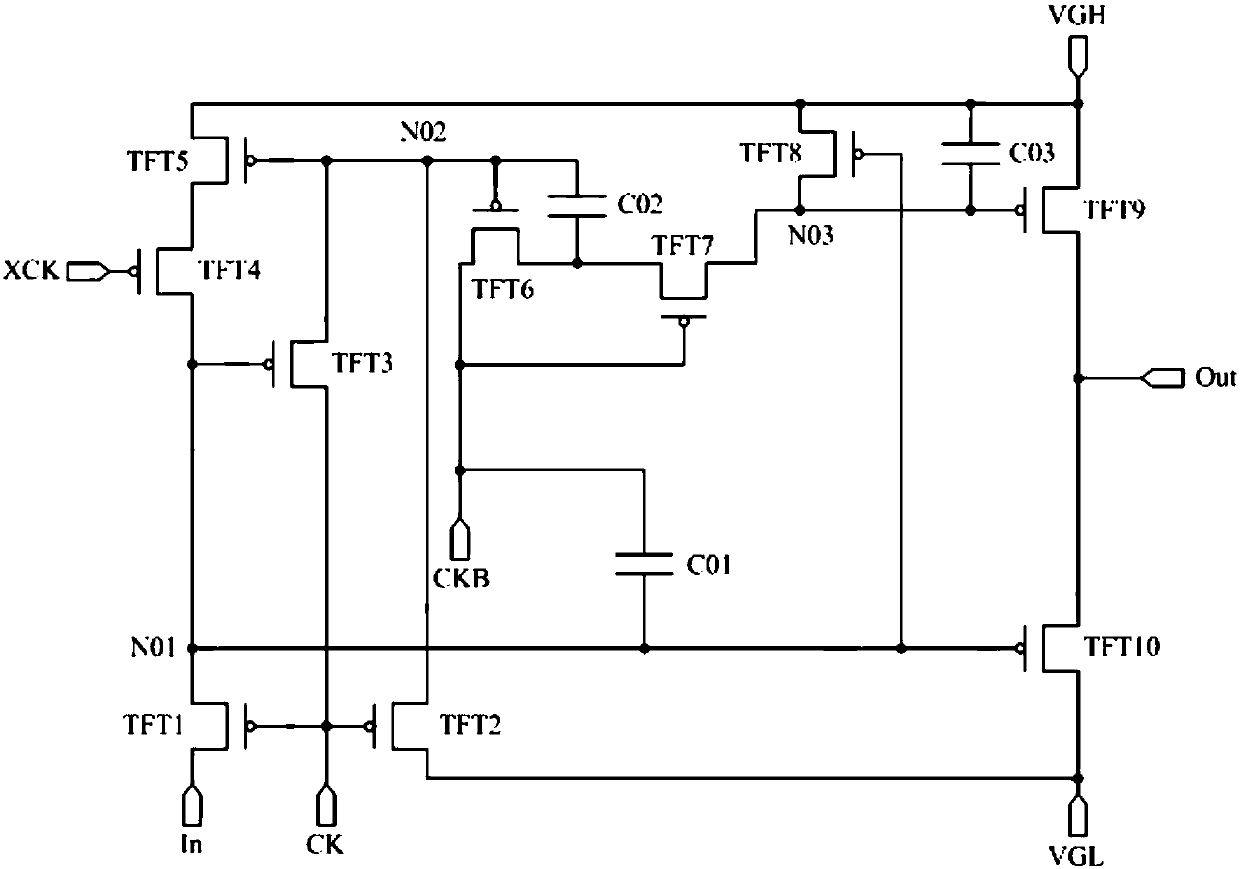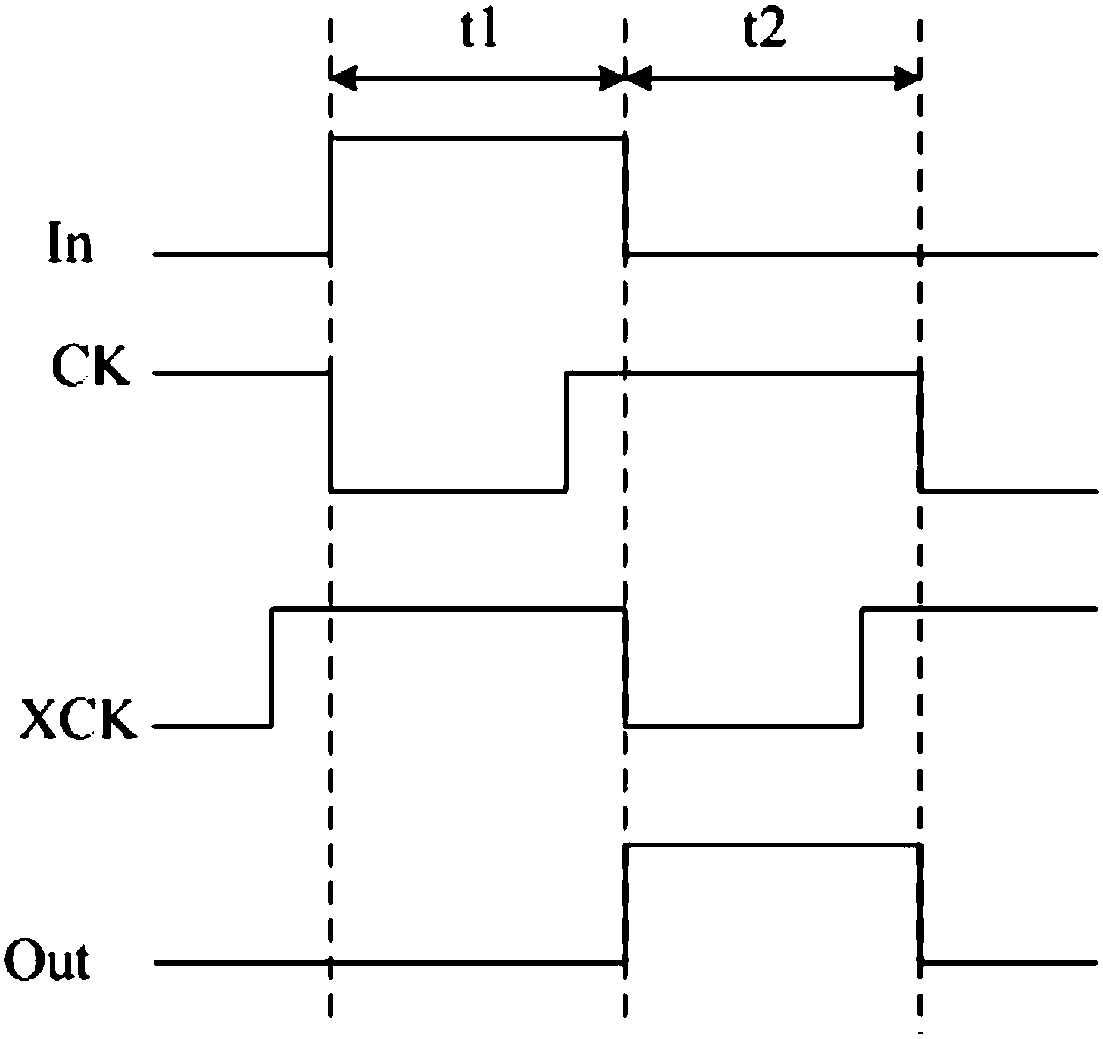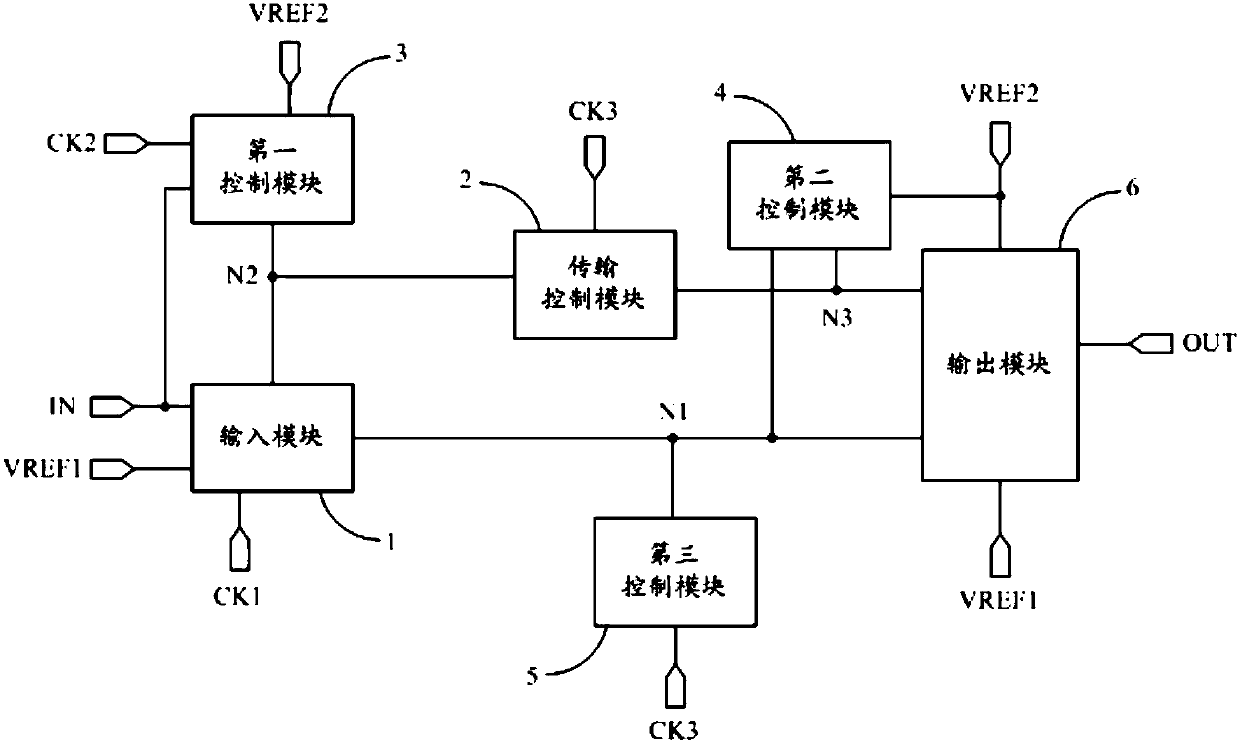Shift register, driving method thereof, driving control circuit and related device
A technique for driving a control circuit and a shift register, which is applied in the fields of a drive control circuit, its driving method, a shift register, a display panel and a display device, and can solve problems such as the inability of a shift register to normally shift and output
- Summary
- Abstract
- Description
- Claims
- Application Information
AI Technical Summary
Problems solved by technology
Method used
Image
Examples
Embodiment 1
[0056] During specific implementation, in the shift register provided by the embodiment of the present invention, such as Figure 4 As shown, the input module 1 may include: a tenth transistor M10 and an eleventh transistor M11;
[0057] The control pole of the tenth transistor M10 is connected to the first clock signal terminal CK1, the first pole of the tenth transistor M10 is connected to the first reference signal terminal VREF1, and the second pole of the tenth transistor M10 is connected to the second node N2;
[0058] The control electrode of the eleventh transistor M11 is connected to the first clock signal terminal CK1 , the first electrode of the eleventh transistor M11 is connected to the input signal terminal IN, and the second electrode of the eleventh transistor M11 is connected to the first node N1 .
[0059] In the shift register provided by the embodiment of the present invention, when the tenth transistor is in a conducting state under the control of the sign...
Embodiment 2
[0093] by Figure 4 The structure of the shift register shown as an example, a T0 stage is inserted between the T4 stage and the T5 stage in the circuit timing diagram of the first embodiment, that is, on the basis of the circuit timing diagram in the first embodiment, the input signal terminal IN The duration of the high potential signal is extended by one clock cycle, and the corresponding circuit timing diagram is as follows Image 6 As shown, and mainly select eight stages of T1, T2, T3, T4, T0, T5, T6, and T7; among them, the T0 stage is divided into T01 sub-stage, T02 sub-stage and T03 sub-stage.
[0094] Because the structure of the shift register in the second embodiment is the same as that of the shift register in the first embodiment, and the potentials of the signals in the T1~T4 stages and T5~T7 stages in the circuit timing diagram in the second embodiment The corresponding potentials of the signals in the T1-T7 phases in the first embodiment are the same, therefo...
Embodiment 3
[0102] The structure of the shift register corresponding to this embodiment is as follows Figure 7 As shown, it is only for the first embodiment Figure 4 The connection mode of the first transistor M1 and the second transistor M2 in the transmission control module 2 is modified, so that the transmission control module can specifically be used to control the second node and the signal of the third clock signal terminal to control the first The signals of the three clock signal terminals are provided to the third node, so that the potential of the signal of the second node is the same as that of the signal of the third node. The connection modes of the remaining transistors are all the same as those in Embodiment 1. Figure 4 The same, and will not be repeated here.
[0103] During specific implementation, in the shift register provided by the embodiment of the present invention, such as Figure 7 As shown, in the transmission control module 2, the control pole of the first...
PUM
 Login to View More
Login to View More Abstract
Description
Claims
Application Information
 Login to View More
Login to View More - R&D
- Intellectual Property
- Life Sciences
- Materials
- Tech Scout
- Unparalleled Data Quality
- Higher Quality Content
- 60% Fewer Hallucinations
Browse by: Latest US Patents, China's latest patents, Technical Efficacy Thesaurus, Application Domain, Technology Topic, Popular Technical Reports.
© 2025 PatSnap. All rights reserved.Legal|Privacy policy|Modern Slavery Act Transparency Statement|Sitemap|About US| Contact US: help@patsnap.com



